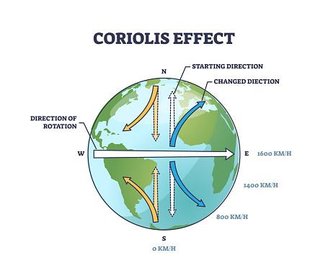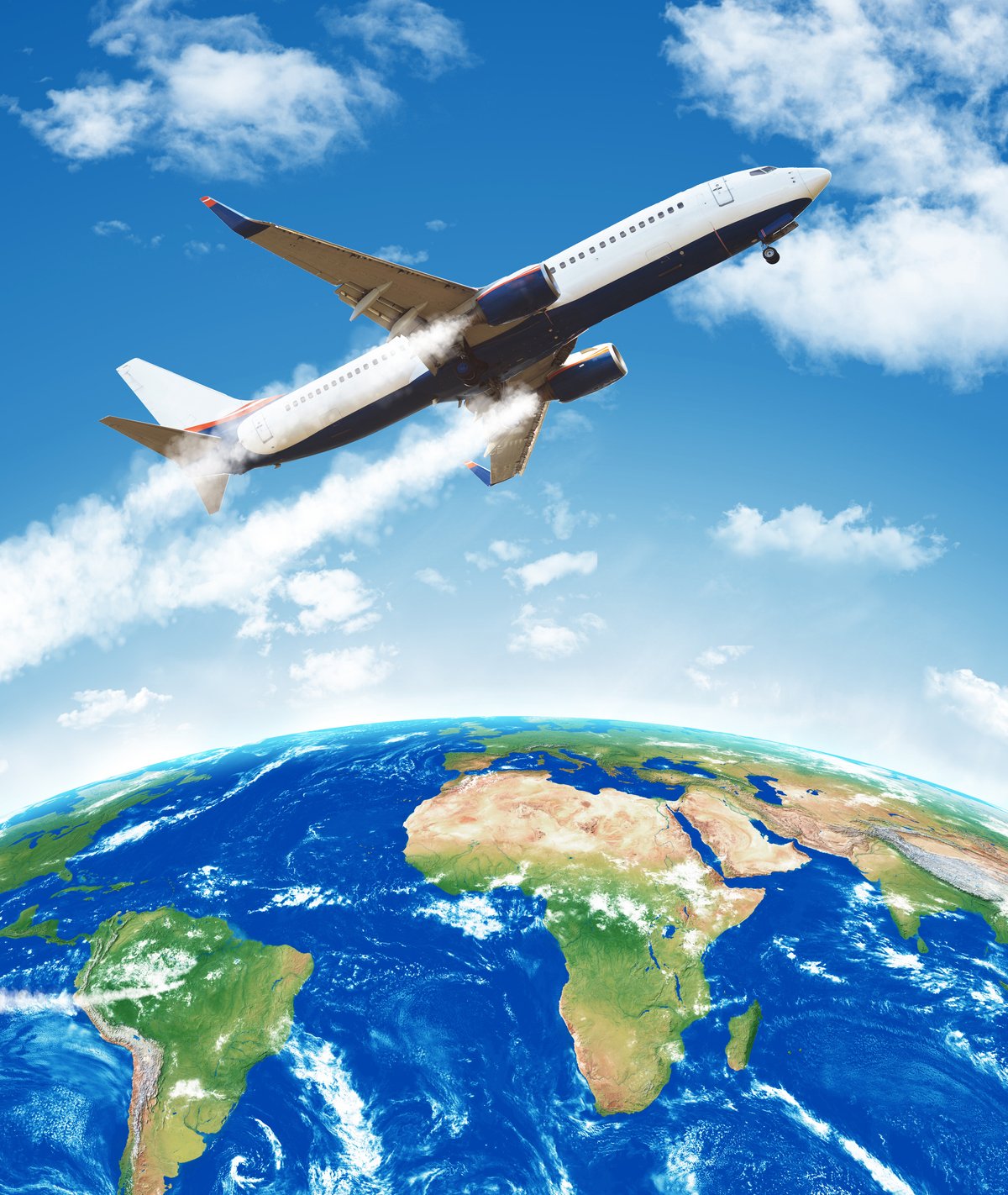Flying in the opposite direction of the Earth’s rotation might seem like the best solution for fast flights, because if you encounter something that’s “walking” toward you, you’ll eventually meet it halfway. But that’s not how it works on this planet.
Gravity, winds, fuel, aerodynamics and Newton are in the middle of answering why When it comes to agility in aviation, flying backwards is not the answer. This might actually be a bad idea, leading to losses and even more flight hours. Curious to know why? Let’s explain.
Fasten your seat belts, the world will turn
The Earth rotates axially from west to east at a speed of approximately 1,666 kilometers per hour and completes its rotation around itself in approximately 24 hours.
Commercial airliners and jets can reach speeds of between 900 km/h and 1,000 km/h. Supersonics, like the now retired Concorde, could travel at speeds in excess of 2,000 km/h!
Therefore, the sum of these speeds in opposite directions might be expected to result in flights between continents that take minutes rather than hours. It would be a quick step to reach New Zealand by leaving Brazil and flying from east to west. But unfortunately this is a wrong idea.
No matter how fast airplanes and our planet spin, we can’t eliminate the physical principles that govern our world, including inertia. We are spinning in space at the same speed as the Earth, and there is nothing that can change that speed, whether on land, in water, or in the air.

In order for the idea of flying in the opposite direction of the Earth’s rotation to be possible, it is necessary to “cancel” the inertial force during takeoff of the aircraft by maintaining a constant speed as if the Earth were stationary while rotating, pointing the aircraft to its destination and landing safely at your destination.
It’s like you’re exercising on a treadmill. Even though you’re running, you’re maintaining a steady pace so that you don’t get dragged and thrown to the ground while the treadmill counts your displacement. Friction is what keeps you “still”, as well as speed. But thanks to inertia, The Earth’s rotation does not have a direct effect on the duration of the flight, but the events it causes do..
The drift of the world
Remember how we mentioned above that everything on Earth is subject to inertia? That includes the atmosphere. As our little spinning planet makes its axial movement, it drags the atmosphere along with it, creating air currents.
These currents respond to the phenomenon It is known as the Coriolis Inertial Pseudo-Force, which explains the “rotational” motion of liquids under the influence of the Earth’s rotation.

In this case, we are specifically talking about air that rotates in currents that move from west to east in the same direction as the rotation of our planet. At high altitudes, jet streams form where airplanes usually fly.
The known cruising altitudes above 10 km above the ground look for these currents to push the aircraft. It is always better to travel with the wind. Not being “against” can help you save fuel and flight hours.
Flying against time
So, contrary to what is thought, The world is not moving away from us, instead it is helping planes fly more smoothlyImagine flying against the wind on every trip if there are already sections where there is a chance of turbulence?
This is what happens when you fly in the opposite direction of the normal route; flights become more difficult due to increased air resistance, increased fuel consumption and increased flight hours.
But all this does not mean that there are no flights against the direction of the turn; it does mean that routes tend to be calculated to follow the best wind paths. What really affects flight duration are air currents and weather conditions.
Do you have any questions? Tell us about it on our social networks and take the opportunity to understand why time does not ‘go forward’ according to modern Physics. On to the next one!
Source: Tec Mundo
I’m Blaine Morgan, an experienced journalist and writer with over 8 years of experience in the tech industry. My expertise lies in writing about technology news and trends, covering everything from cutting-edge gadgets to emerging software developments. I’ve written for several leading publications including Gadget Onus where I am an author.













